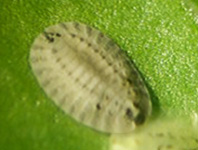Abstract
Known as a monotypic genus for over a century, Marmasoma White, 1916 is an endemic Australian bee fly genus belonging to the tribe Eclimini of the subfamily Bombyliinae. A new species: Marmasoma hortorum sp. nov. is described based on a series of specimens from Western Australia and South Australia. This new species can be easily distinguished from the congener by the inconspicuous pale wing markings and mostly white to pale yellow scales on the body, as well as characters of both male and female genitalia. M. sumptuosum is found in south-eastern Australia, including Tasmania, and some specimens have been collected on Kangaroo Island, South Australia. M. hortorum sp. nov. occurs in south Western Australia, and a pair of specimens has been taken just north of Port Augusta in South Australia. A key to species of Marmasoma is provided.
References
Bezzi, M. (1924) The Bombyliidae of the Ethiopian Region based on material in the British Museum (Natural History). British Museum (Natural History), London, 390 pp.
Cumming, J.M. & Wood, D.M. (2009) Adult Morphology and Terminology. In: Brown, B.V., Borkent, A., Cumming, J.M., Wood, D.M., Woodley, N.E. & Zumbado, M. (Eds.), Manual of Central American Diptera. Vol. I. NRC Research Press, Ottawa, pp. 9–50.
Evenhuis, N.L. & Greathead, D.J. (1999) World Catalog of Bee Flies (Diptera Bombyliidae). Backhuys Publishers, Leiden, 756 pp.
Evenhuis N.L. & Greathead D.J. (2015) World Catalog of bee flies (Diptera: Bombyliidae). Netherlands: Backhuys Publishers Leiden. Available from: http://hbs.bishopmuseum.org/bombcat/bombcat-revised2015.pdf (Accessed 10 December 2017)
Greathead, D.J. (1988) The relationships of Tillyardomyia Tonnoir with a redefinition of the subfamily Ecliminae (Diptera: Bombyliidae). New Zealand Entomologist, 11, 14–21.
https://doi.org/10.1080/00779962.1988.9722530Hall, J.C. (1969) A review of the subfamily Cylleniinae with a world revision of the genus Thevenemyia Bigot (Eclimus auct.) (Diptera: Bombyliidae). University of California Publications in Entomology, 56, 1–85.
Hardy, G.H.H. (1921) Australian Bombyliidae and Cyrtidae (Dipt.). Papers & Proceedings of the Royal Tasmanian Society, 1921, 41–83.
Hull, F.M. (1973) Bee flies of the world. The genera of the family Bombyliidae. Smithsonian Institution Press, Washington DC, 687 pp.
https://doi.org/10.5962/bhl.title.48406Kozub, D., Khmelik, V., Shapoval, J., Chentsov, V., Yatsenko, S., Litovchenko, B. & Starikh, V. (2000) Helicon Focus 6.7.1 Pro. Helicon Soft Ltd, Roseau Valley.
Mühlenberg, M. (1971) Phylogenetisch-systematische Studien an Bombyliiden (Diptera).Zeitschrift für Morphologie der Tiere, 70, 73–102.
https://doi.org/10.1007/BF00297220Roberts, F.H.S. (1928) A revision of the Australian Bombyliidae (Diptera). Part I. The Proceedings of the Linnean Society of New South Wales, 53, 90–144.
Roberts, F.H.S. (1929) A revision of the Australian Bombyliidae (Diptera). III. The Proceedings of the Linnean Society of New South Wales, 54, 553–83.
Rodrigues, P.F.M., McAlister, E. & Lamas, C.J.E. (2017) Review of Marmasoma White with lectotype designation of M. sumptuosum White and an identification key to the Australasian/Oceanian genera of Ecliminae (Diptera, Bombyliidae). Zootaxa, 4232 (2), 185–196.
https://doi.org/10.11646/zootaxa.4232.2.3Theodor, O. (1983) The Genitalia of Bombyliidae (Diptera). Israel Academy of Sciences and Humanities, Jerusalem, 275 pp.
Tonnoir, A.L. (1927) Descriptions of new and remarkable New Zealand Diptera. Records of the Canterbury Museum, 3, 101–112.
Trautwein, M.D., Wiegmann, B.M. & Yeates, D.K. (2011) Overcoming the effects of rogue taxa: Evolutionary relationships of the bee flies. PLOS Currents, 3, 1–20. [RRN1233]
White, A. (1916) The Diptera-Brachycera of Tasmania. Part III. Families Asilidae, Bombyliidae, Empidae, Dolichopodidae, & Phoridae. Papers and Proceedings of the Royal Society of Tasmania, 1916, 148–266.
https://doi.org/10.5962/bhl.part.28993Yeates, D.K. (1994) The cladistics and classification of the Bombyliidae (Diptera: Asiloidea). Bulletin of the American Museum of Natural History, 219, 1–191.

